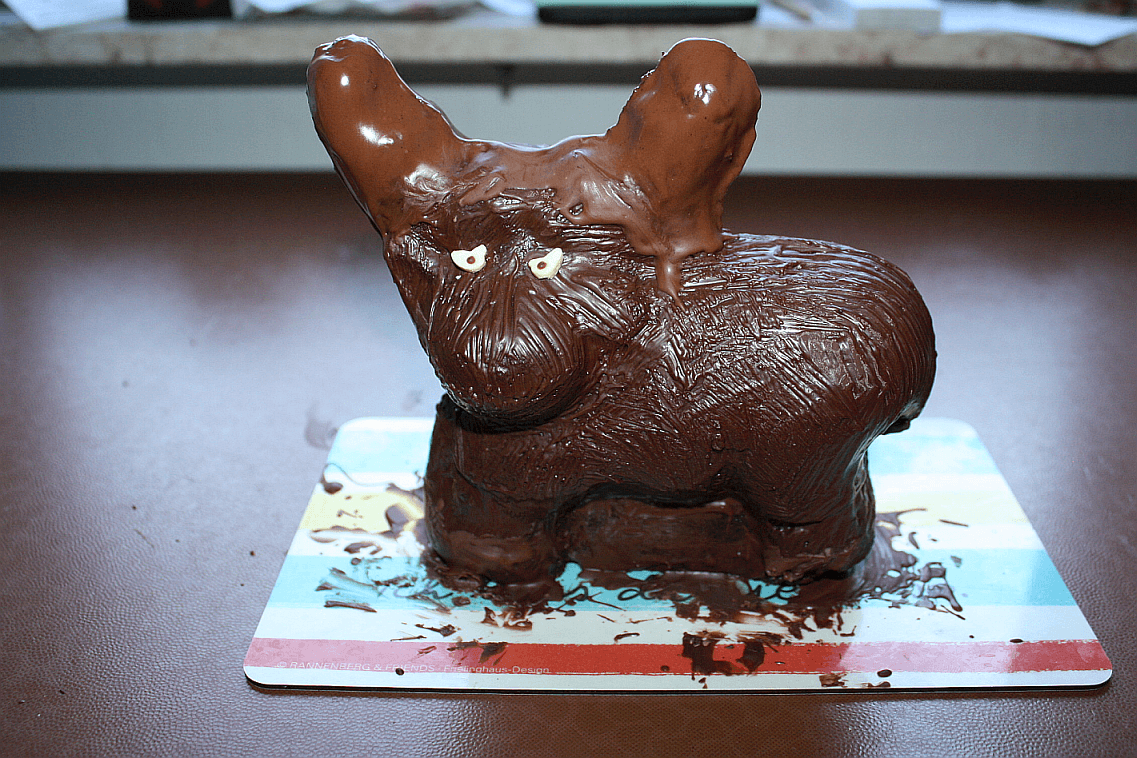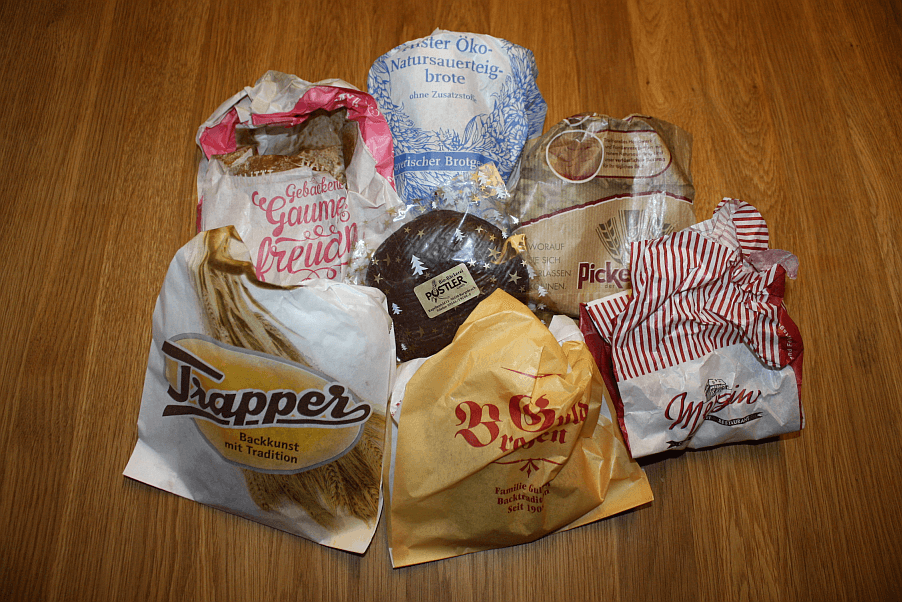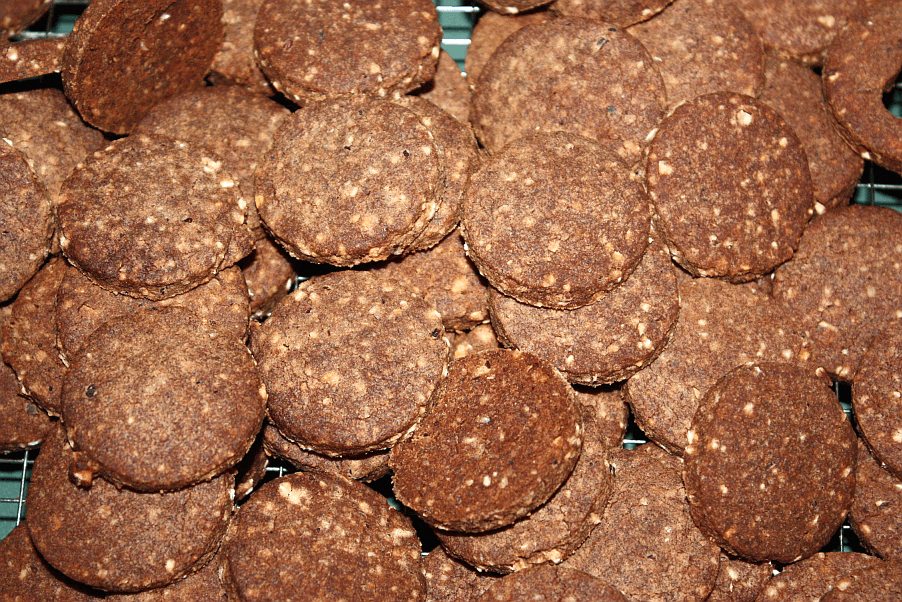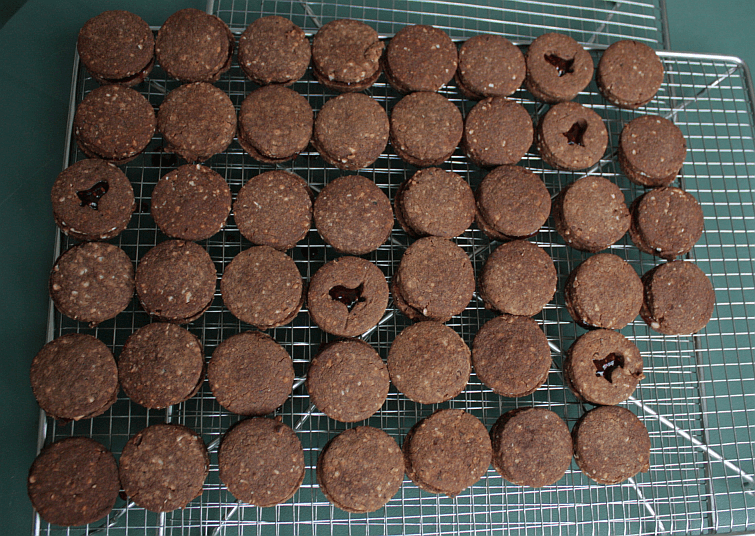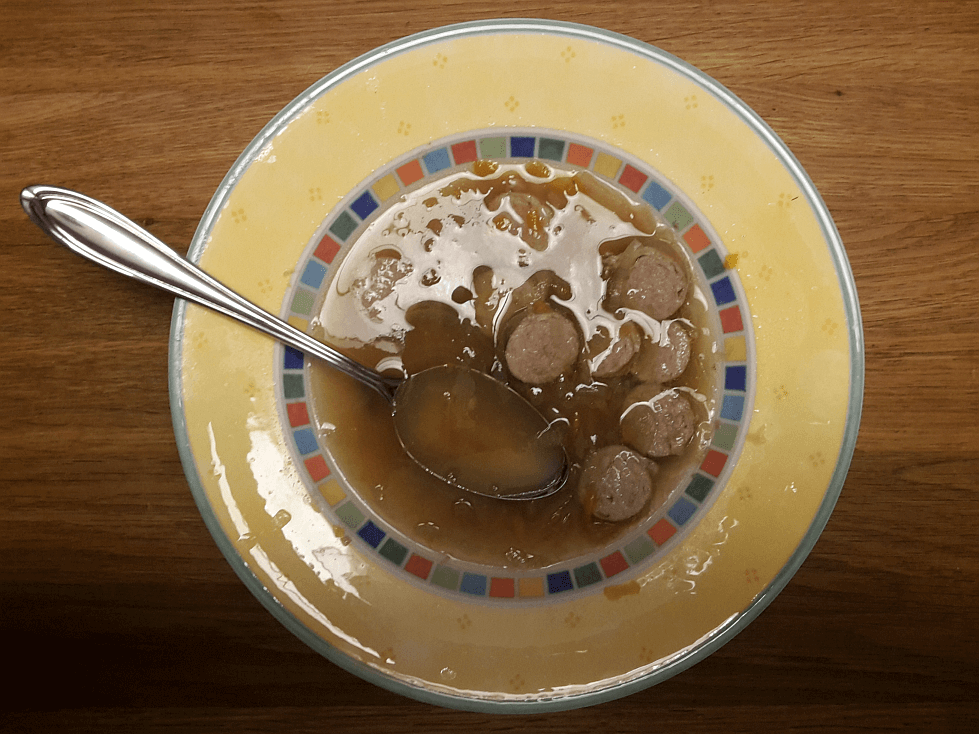At the Nadelwelt, there were also opportunities to get some journals - about textile crafts, obviously, but also some lifestyle and food and drink journals, to round it all off. I happened to get one about food and drink into my hands, and of course I had to leaf through it.
That issue of the journal claimed to have the recipe for the world's best rhubarb cake. That cake featured a weird mix of shortcrust dough and yeast dough. That you were supposed to mix together until they sort of marble. Um... very, very weird.
Well. That extra weirdness aside... I happen to know the world's best rhubarb cake. Intimately. It looks like this:
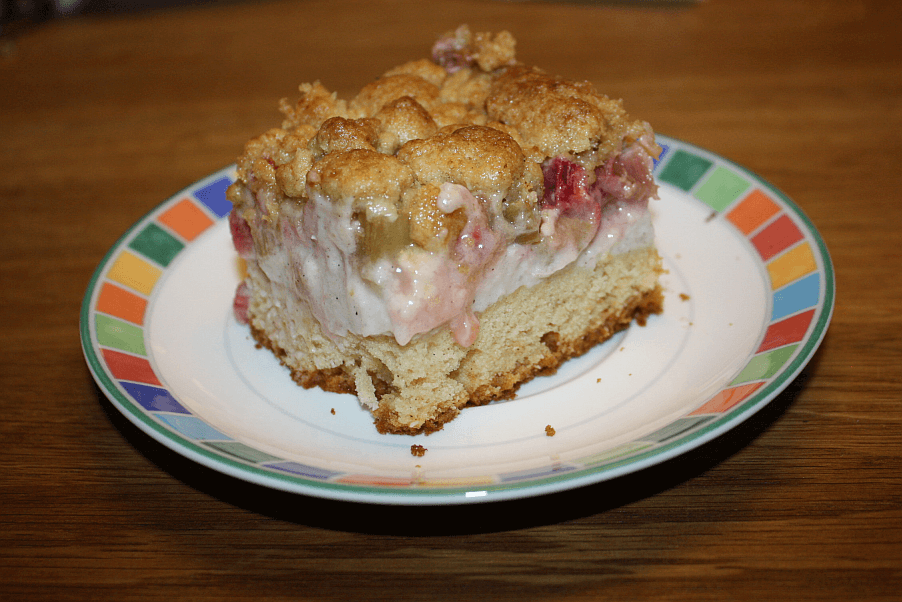
There is a nice layer of fluffy, moist dough, covered with a vanilla custard layer that smoothly transitions into a lot of wonderful rhubarby rhubarb, and all that is covered with a generous layer of streusel. That, dear readers of this blog, is the world's best rhubarb cake.
And here's the recipe for you:
For the dough:
200 g butter
160 g sugar
2 packets vanilla sugar (about 16 g)
4 eggs
150 g sour cream (around 24% fat content)
360 g flour (I use spelt flour)
2 heaped teaspoons baking powder
For the custard:
750 ml milk
60 g sugar
25 g vanilla sugar (1 part ground vanilla beans, 9 parts white sugar)
60 g starch
250 g sour cream
For the streusel:
400 g flour
200 g sugar
about 16 g vanilla sugar
300 g butter (cool to cold)
and, of course, rhubarb - 2 kg of rhubarb. Yes, that is a lot. This is not a puny little cake that has a hint of rhubarb. This is Rhubarb Central with Streusel on Top.
Peel the rhubarb and cut into cubes of about 1 cm side length; sprinkle lightly with sugar to draw some of the juice (and acid) out. (You could also blanch it, but I go with the sugar version on this one.) Let sit for about half an hour (or longer, that is no problem).
Put most of the milk for the custard into a pot, mix in the vanilla sugar, and bring to a boil. Use the remaining milk to stir in the starch and the sugar. Once the milk is boiling, take it off the heat, stir in the custard mix, place back on the heat and stir until it thickens and bubbles lightly. Remove from heat and let it cool off a bit, stirring occasionally.
Beat butter and sugar for the dough to a creamy mixture, add eggs, vanilla sugar, sour cream and the flour mixed with the baking powder. Spread on a baking tray (a large one, 30 x 40 cm), and pre-bake in the pre-heated oven for about 12 minutes at 180°C with the convection fan on. I recommend using a baking frame around the tray, as the cake will get rather high in the end, when it is all assembled.
Cut the butter for the streusel into small pieces and knead together with the rest of the ingredients until just combined; it should form smallish streusel all on its own.
Stir the sour cream into the custard and spread on the pre-baked dough layer. Dough visibility after you do this: zero.
Now spread the drained rhubarb cubes on the custard layer. There will be a lot of rhubarb. That is meant to be this way (and also why the cubes are so small - they pack more densely this way). Custard visibility after adding rhubarb: close to zero or zero.
As the final layer, you spread your streusel on top of the rhubarb. Rhubarb visibility after adding this final layer should be close to zero or zero.
Bake at 180°C for about 30-35 minutes; the streusel should be golden brown.
There you go. The custard and sour cream mix wonderfully with the tartness and taste of the rhubarb; the dough basis makes it a cake, and the streusel add texture and sweetness and buttery richness. It's not very sweet overall, so if you prefer your cakes very sweet, you might want to add more sugar to both the dough and the custard - I love it best this way.
If you're making it (it's the season, after all), do let me know if you agree or if you have another opinion on what is the world's best rhubarb cake!
That issue of the journal claimed to have the recipe for the world's best rhubarb cake. That cake featured a weird mix of shortcrust dough and yeast dough. That you were supposed to mix together until they sort of marble. Um... very, very weird.
Well. That extra weirdness aside... I happen to know the world's best rhubarb cake. Intimately. It looks like this:

There is a nice layer of fluffy, moist dough, covered with a vanilla custard layer that smoothly transitions into a lot of wonderful rhubarby rhubarb, and all that is covered with a generous layer of streusel. That, dear readers of this blog, is the world's best rhubarb cake.
And here's the recipe for you:
For the dough:
200 g butter
160 g sugar
2 packets vanilla sugar (about 16 g)
4 eggs
150 g sour cream (around 24% fat content)
360 g flour (I use spelt flour)
2 heaped teaspoons baking powder
For the custard:
750 ml milk
60 g sugar
25 g vanilla sugar (1 part ground vanilla beans, 9 parts white sugar)
60 g starch
250 g sour cream
For the streusel:
400 g flour
200 g sugar
about 16 g vanilla sugar
300 g butter (cool to cold)
and, of course, rhubarb - 2 kg of rhubarb. Yes, that is a lot. This is not a puny little cake that has a hint of rhubarb. This is Rhubarb Central with Streusel on Top.
Peel the rhubarb and cut into cubes of about 1 cm side length; sprinkle lightly with sugar to draw some of the juice (and acid) out. (You could also blanch it, but I go with the sugar version on this one.) Let sit for about half an hour (or longer, that is no problem).
Put most of the milk for the custard into a pot, mix in the vanilla sugar, and bring to a boil. Use the remaining milk to stir in the starch and the sugar. Once the milk is boiling, take it off the heat, stir in the custard mix, place back on the heat and stir until it thickens and bubbles lightly. Remove from heat and let it cool off a bit, stirring occasionally.
Beat butter and sugar for the dough to a creamy mixture, add eggs, vanilla sugar, sour cream and the flour mixed with the baking powder. Spread on a baking tray (a large one, 30 x 40 cm), and pre-bake in the pre-heated oven for about 12 minutes at 180°C with the convection fan on. I recommend using a baking frame around the tray, as the cake will get rather high in the end, when it is all assembled.
Cut the butter for the streusel into small pieces and knead together with the rest of the ingredients until just combined; it should form smallish streusel all on its own.
Stir the sour cream into the custard and spread on the pre-baked dough layer. Dough visibility after you do this: zero.
Now spread the drained rhubarb cubes on the custard layer. There will be a lot of rhubarb. That is meant to be this way (and also why the cubes are so small - they pack more densely this way). Custard visibility after adding rhubarb: close to zero or zero.
As the final layer, you spread your streusel on top of the rhubarb. Rhubarb visibility after adding this final layer should be close to zero or zero.
Bake at 180°C for about 30-35 minutes; the streusel should be golden brown.
There you go. The custard and sour cream mix wonderfully with the tartness and taste of the rhubarb; the dough basis makes it a cake, and the streusel add texture and sweetness and buttery richness. It's not very sweet overall, so if you prefer your cakes very sweet, you might want to add more sugar to both the dough and the custard - I love it best this way.
If you're making it (it's the season, after all), do let me know if you agree or if you have another opinion on what is the world's best rhubarb cake!




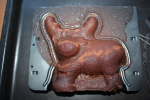 Still in the second half of the mould...
Still in the second half of the mould...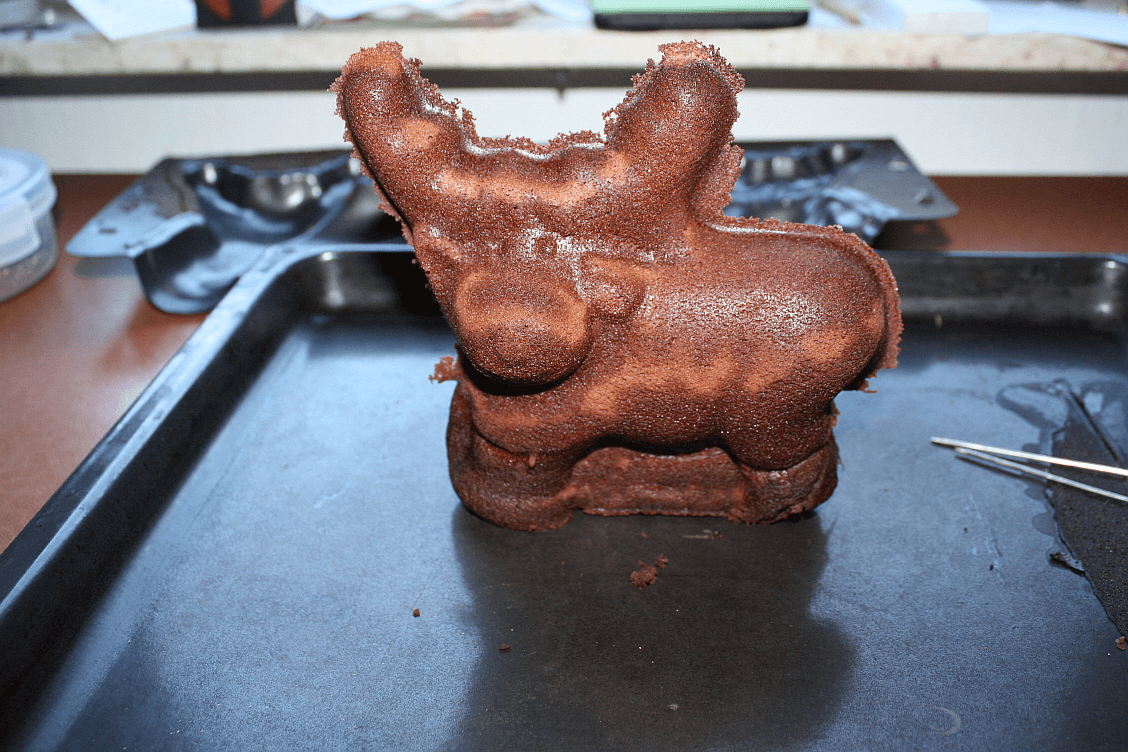 It's out!
It's out!